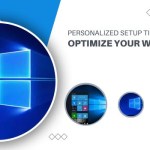Security Risks for Windows Server 2008 R2 Users

While Windows Server 2008 introduced notable security enhancements, including hard drive encryption and an improved firewall, it is not immune to security flaws. Here’s an in-depth overview of the top 20 critical vulnerabilities in Windows Server 2008 R2 and tips on remediation:
1. Windows Integer Underflow Vulnerability (CVE-2015-6130):
Description: Uniscribe’s integer underflow allows remote code execution via a specially crafted font.
Remediation: Validate fonts for potential vulnerabilities and update as necessary.
2. Windows DNS Use After Free Vulnerability (CVE-2015-6125):
Description: DNS server vulnerability enables arbitrary code execution through crafted requests.
Remediation: Regularly update and patch DNS server configurations.
3. Graphics Memory Corruption Vulnerability (CVE-2015-6108):
Description: Windows font library vulnerability permits remote code execution via embedded fonts.
Remediation: Monitor fonts for potential threats and update font libraries.

Security Risks for Windows Server 2008 R2 Users
4. Windows Journal Heap Overflow Vulnerability (CVE-2015-6097):
Description: Heap-based buffer overflow in Windows Journal allows arbitrary code execution via a .jnt file.
Remediation: Exercise caution with .jnt files and ensure timely updates.
5. Windows Journal RCE Vulnerability (CVE-2015-2530):
Description: Another Windows Journal vulnerability enabling remote code execution via a .jnt file.
Remediation: Monitor and restrict .jnt file usage.
6. Toolbar Use-After-Free Vulnerability (CVE-2015-2515):
Description: Use-after-free vulnerability allows remote code execution with a crafted toolbar object.
Remediation: Regularly update and patch toolbar components.

Security Risks for Windows Server 2008 R2 Users
7. Graphics Component Buffer Overflow Vulnerability (CVE-2015-2510):
Description: Buffer overflow in Adobe Type Manager Library permits remote code execution via OpenType fonts.
Remediation: Update and monitor OpenType fonts for potential threats.
8. Windows Media Center RCE Vulnerability (CVE-2015-2509):
Description: Media Center vulnerability allows user-assisted remote code execution via a crafted MCL file.
Remediation: Monitor and restrict the usage of MCL files.
9. OpenType Font Parsing Vulnerability (CVE-2015-2506):
Description: Adobe Type Manager Library flaw enables a denial-of-service attack using a crafted OpenType font.
Remediation: Exercise caution with OpenType fonts and perform regular updates.

Security Risks for Windows Server 2008 R2 Users
10. Server Message Block Memory Corruption Vulnerability (CVE-2015-2474):
Description: SMB vulnerability permits remote authenticated users to execute arbitrary code.
Remediation: Monitor and restrict SMB server error-logging actions.
11. Remote Desktop Protocol DLL Planting Remote Code Execution Vulnerability (CVE-2015-2473):
Description: Untrusted search path vulnerability in RDP client allows local users to gain privileges.
Remediation: Update RDP client configurations and monitor DLL paths.
12. TrueType Font Parsing Vulnerability (CVE-2015-2464):
Description: TrueType font flaw enables remote code execution.
Remediation: Regularly update and monitor TrueType fonts.
13. Windows Filesystem Elevation of Privilege Vulnerability (CVE-2015-2430):
Description: Elevation of privilege vulnerability allows bypassing application sandbox protection.
Remediation: Update and monitor applications for potential filesystem actions.

Security Risks for Windows Server 2008 R2 Users
14. OpenType Font Driver Vulnerability (CVE-2015-2426):
Description: Buffer underflow in Adobe Type Manager Library permits remote code execution via OpenType fonts.
Remediation: Exercise caution with OpenType fonts and perform regular updates.
15. Microsoft Common Control Use-After-Free Vulnerability (CVE-2015-1756):
Description: Use-after-free vulnerability in Microsoft Common Controls allows remote code execution.
Remediation: Monitor and update Microsoft Common Controls regularly.
16. Microsoft Schannel Remote Code Execution Vulnerability (CVE-2014-6321):
Description: Schannel vulnerability permits remote code execution via crafted packets.
Remediation: Monitor and patch Schannel configurations.
17. Comctl32 Integer Overflow Vulnerability (CVE-2013-3195):
Description: Integer overflow flaw in Comctl32.dll permits remote code execution.
Remediation: Regularly update and patch Comctl32.dll.
18. Remote Procedure Call Vulnerability (CVE-2013-3175):
Description: RPC vulnerability allows remote attackers to execute arbitrary code via malformed requests.
Remediation: Monitor and restrict RPC requests.

Security Risks for Windows Server 2008 R2 Users
19. HTTP.sys Remote Code Execution Vulnerability (CVE-2015-1635):
Description: Vulnerability in HTTP.sys permits remote attackers to execute arbitrary code via crafted HTTP requests.
Remediation: Update and monitor HTTP.sys configurations.
20. Windows Telnet Service Buffer Overflow Vulnerability (CVE-2015-0014):
Description: Telnet service vulnerability allows remote attackers to execute arbitrary code via crafted packets.
Remediation: Monitor and secure Telnet service configurations.
Summary:
Unpatched software is a leading cause of data breaches. Regularly update and monitor your Windows Server 2008 R2 deployments to prevent security compromises. UpGuard’s platform offers continuous security monitoring for large Windows environments, ensuring ongoing validation and policy-driven security checks.


